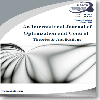Genetic algorithm for optimization in adaptive bus signal priority control
Genetic algorithm for optimization in adaptive bus signal priority control
___
- [1] Ayad, M. T., Mohd, S. A. and Mohd, Z. M. Y., The Use of Genetic Algorithm for Traffic light and Pedestrian Crossing Control, International Journal of Computer Science and Network Security, Vol.9, No.2 (2009).
- [2] David, B., David, R., Ralph, R.M., An overview of genetic algorithm, University Computing, 15(2), pp58-69 (1993).
- [3] Der-Hong, L., Xu, Y., Chandrasekar, P., Parameter Calibration for Paramics Using Genetic Algorithm, TRB, ID Number: 01- 2399 (2001).
- [4] Der-Horng L., Wei H., A new methodology for multi-level bus prioritization at signalized intersections, TRB Annual Meeting CD-ROOM (2005).
- [5] Eleni C. and Alexander. S., Traffic Signal Optimization with Transit Signal Priority: Application to an Isolated intersection , TRB Annual Meeting (2011).
- [6] Geetha, N., W., Shamas, u. I. B., Masao, K. and Majid, S., An improved Bus signal Priority Model, Seisan-kenkyu, Vol.60, No.4, p.59-63, (2008).
- [7] Guangwei, Z., Albert, G. and Shen, L.D., Optimization of adaptive transit signal priority using parallel Genetic Algorithm, Tsinghua science and technology, ISSN 1007-0214 02/14, pp131-140, Vol.12, No.2 (2007).
- [8] Halim, C., Michael, G.H. B., Traffic signal timing optimisation based on genetic algorithm approach, including drivers'routing, Transportation Research Part B 38, 329-342, (2004).
- [9] Henry X.L., Lianyu. C., Will. R., Paramics API Development Document for Actual Signal, Signal Coordination and Ramp Control, California PATH ATMIS Center, University of California, Irvine, (2003).
- [10] Heydar, T. S., Mohsen, K. and Mahsa, D., Intelligent Transport System based on Genetic Algorithm, World Applied Sciences Journal 6 (7): 908-913 (2009).
- [11] Highway Capacity Manual, TRB, National Research Council, Washington D.C.,USA (2000).
- [12] Jitendra, A. and Tom, V.M., Transit Route Network Design Using Parallel Genetic Algorithm, Journal of computing in civil engineering (ASCE), Vol.18, No.3 (2004).
- [13] Leena, S., et al., Time Optimization for Traffic Signal Control Using Genetic Algorithm, International Journal of Recent Trends in Engineering, Vol.2, No.2 (2009).
- [14] Li, M., Development and applications of adaptive transit signal priority system, doctoral Dissertation, (2010).
- [15] Liu, H., Zhang, J. and Cheng, D., Analytical Approach to Evaluating Transit Signal Priority, Journal of Transportation systems engineering and information technology, Vol.8, Issue 2 (2008).
- [16] Liviu, C. and Andreea, D., Public Transport Route Finding using Hybrid Genetic Algorithm, Informative Economicca, Vol.15, No.1 (2011)
- [17] Melanie, M., Genetic Algorithm Overview, Santa Fe Institute, (1995).
- [18] Qing H., K Larry, H., Jun, D., A Heuristic algorithm for Priority traffic signal control, TRB Annual Meeting (2011).
- [19] Regina, M., Traffic signal timing manual, U.S. Department of Transportation, Federal Highway Administration, Publication Number: FHWA-HOP-08-024, June (2008).
- [20] Richard, J.P. and Xin, F., Improving genetic algorithms perforamce by hashing fitness values, Department of Electrical and Computer Engineering, Marquette University, USA
- [21] Rui W., Sunghyu, B., Okamura, T., Nakamura, F., A practical approach for design of bus signal priority strategy, 12th WCTR, Lisbon, Portugal (2010).
- [22] Ryohei, T., et al., Trial Operation of a new public transportation Prirority system using Infrared beacons for two-way communication, 3rd Annual World Congress on ITS, Orland (1996).
- [23] Wanjing M., Yue, L., Xiao-Guang, Y., A dynamic Programming Model for Bus Signal Priority with Multi request, TRB Annual Meeting (2011).
- ISSN: 2146-0957
- Yayın Aralığı: 4
- Yayıncı: Prof. Dr. Ramazan YAMAN
Application of a mathematical model to an advertisement reservation problem
Ozlem COSGUN, Ilkay GULTAS, Mehmet N SERARSLAN
Mixed type second-order symmetric duality under F-convexity
Tilak Raj GULATİ, Khushboo VERMA
Minimax fractional programming problem involving nonsmooth generalized ?-univex functions
Anurag JAYSWALA, Dilip KUMAR, Rajnish KUMAR
Equity in multiproduct supply chain network
Mina Saee BOSTANABAD, Javad MEHRİ-TEKMEH, Ali Moghanni DEHKHARGHANİ
Genetic algorithm for optimization in adaptive bus signal priority control
Generalized transformation techniques for multi-choice linear programming problems
Srikumar ACHARYA, Mitali Madhumita ACHARYA
An algorithm for solution of an interval valued EOQ model
Susovan CHAKRABORTTYA, Madhumangalr PAL, Prasun Kumar NAYAKC
